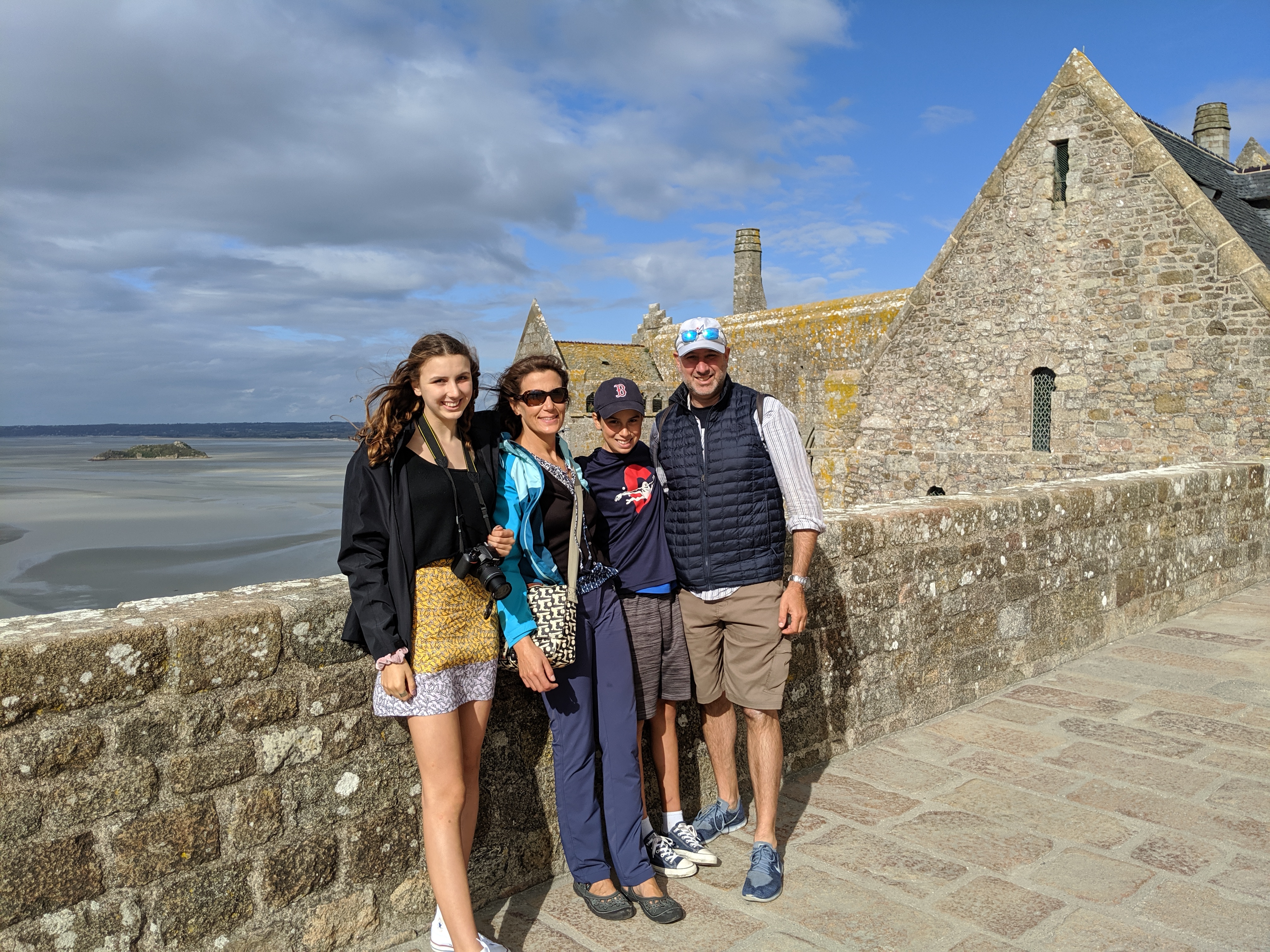From the moment when our French friends showed me a picture of Mont Saint Michel I knew I wanted to go there. It looked so cool, like something I could only experience once. I constantly asked my parents if we were going and when. It turned out however that the wind wasn’t in a favorable direction and we could not sail into the port of Saint Malo which was near Mont Saint Michel. Luckily, when we were trapped in Roscoff because of the winds, we decided to rent a car and drive down to the area of France where Mount Saint Michel was located for the weekend.
We woke up Saturday morning and packed our bags ready to head to Saint Malo. We rented a Eurocar and eventually were on our way. Since Ben and I had a lot of schoolwork, we tried to work on it in the car. Three hours and one sandwich later, we arrived. We could see the white castle almost shimmering above some of the trees and houses all along with water. We all were bubbling with excitement to see this castle and couldn’t wait to explore it and see for ourselves.
We took the 15 minute walk out to the island which was full of people taking pictures and enjoying the view of the castle as it got closer. We were lucky because we were told that during the summer it is REALLY crowded that sometimes you can’t even walk around. We were also lucky on another level because this island gets surrounded by water at high tide and the day that were there had some of the highest tides.
We were able book a guide to show us around this town and Abbey so full of history. The bridge from the mainland to Mont St. Michel took us over fields full of sheep. However, because the tides come in there are no trees on the fields. When when got off the bridge to the island there was sand (which later in the day would be covered by water) which led us to the gate into the town surrounded by high walls.
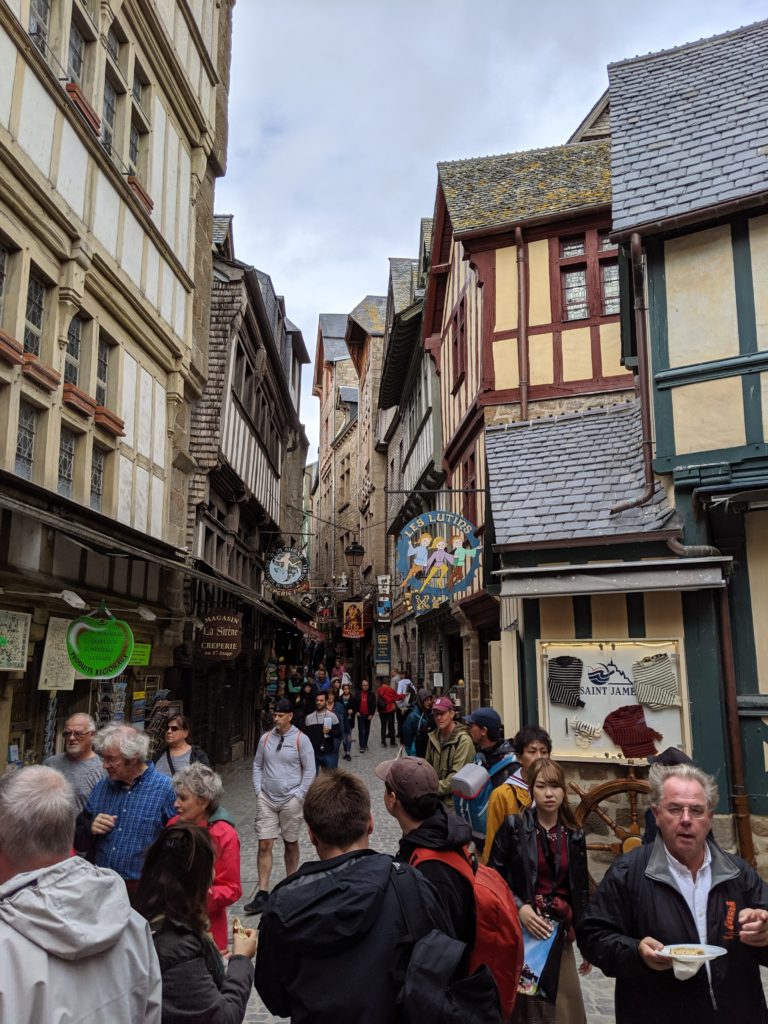
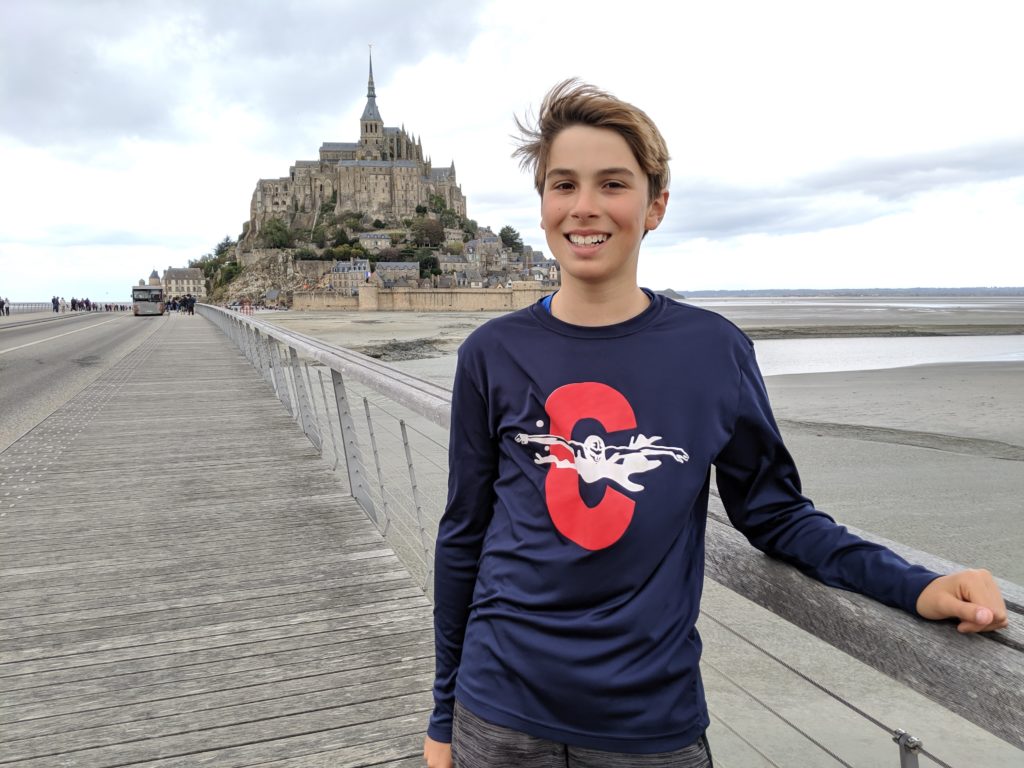
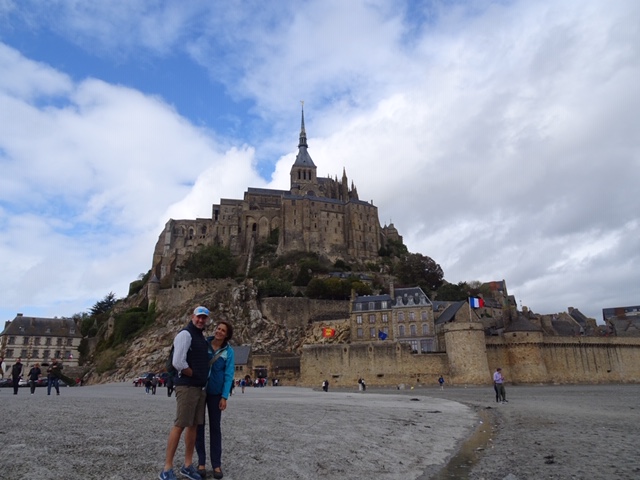
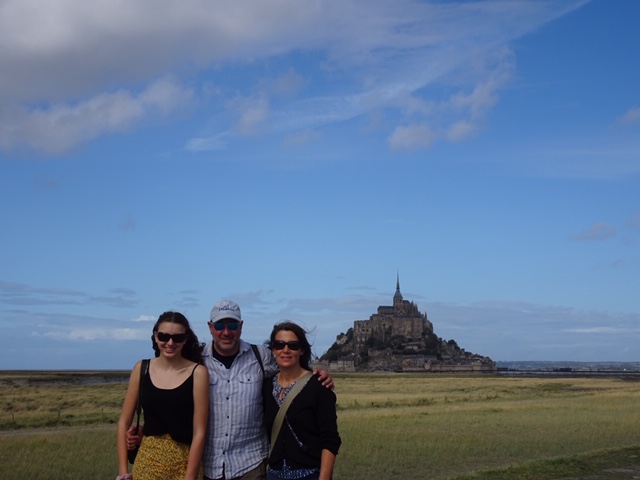
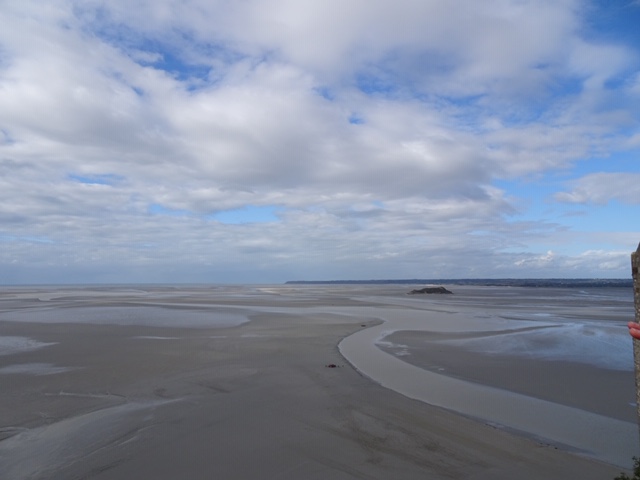
Once we got inside, we realized that we were in not just a castle but a legend as well. According to this legend, there was a Bishop who had a dream of Archangel Michel who told him to go to this island and build a church. When the Bishop woke up he didn’t think anything of it, but the next night the same thing happened again. This time the Archangel put his finger on the bishops forehead and it went right through. When he woke up the Bishop knew it was real because he had hole in his head!
He then went to the island right away started building a small church in the year 709. He was even able to get some relics from this angel and bring them to this new church. From then it only grew with people adding different additions to the island throughout time. It was also known as the spot the the Archangel fought the devil and won, which made the once small church on an island become a destination people traveled thousands of miles to get too. In its golden age, pilgrims came from all over to look at the rock and the place where such great things happened.
However, we were told it wasn’t an easy place to get to back then. There was no bridge and these pilgrims after weeks of traveling would have to wait for low tide to track across sand that could be potentially dangerous. There was quicksand that you could get stuck in, and if you didn’t time it right, and high tide started to come you could get caught in the first wave of water coming from 15 miles away! Our guide told us that once the pilgrims arrived they would have to wait to be able to go up to the Abbey, which was higher up on the rock than the town. There was a hotel and a famous place for omelettes to welcome the pilgrims. They even had tourist shops back then where they could buy a shell with a painting of Mont Saint Michel, so they could prove to others that they had been there.
The Island was overflowing with residents and visitors during the golden age, now there are 14, who are mostly retired, with houses that have been passed down to them. There are also 6 monks and 6 nuns of the island as well. We learned that there always has to be that number or more on the island.
We were taken up the winding streets of the town where we saw a church separate from Mont Saint Michel and a graveyard, which were both for the inhabitants of the island. Then we finally entered the Abbey. All of it was made out of stone and wood, we weren’t able to get to the very top because that was reserved for the monks and nuns that were praying there. We were able to see the building where they slept, and how three times during the night they were woken up to pray. We also learned that in medieval times not just anyone could become a monk, the first born son inherited the land from the parents, the second born son would become a knight, and the third born son would become a monk.
The Abbey was laid out kind of like a spiral. On the very top of where the tallest point of the original island was the big main church is built right on top of it, with big supports under on the level below. Then surrounding the church, but on the level below, were different rooms of the Abbey. At the very top of the whole church there was a golden statue of the archangel. We started on the top and climbed 365 steps to signify every day of the year to the entrance. This was the same way that the pilgrims visiting would also climb up. At the very top of the steps was a cut in the walls of the only spot on the island where you can touch the original authentic rock of Mont Saint Michel. This was the main goal of the pilgrims to touch the rock where the Archangel told the Bishop to build the Church and where he fought the Devil.
The first place we went to was the terrace which was on the roof of one of the lower level buildings before the entrance into the main church. There was a view over the flat sands that went on for 15 miles out to sea, and there was lots of land on the side that we had come from. We learned that that land actually belonged to the monastery and they had collected it as gifts throughout the years. The stone under our feet had different symbols on it our guide told us that they were the initials or the sign of the stonecutter who made it so they could be payed. The stone was cut from a quarry that was down the river 5-6 miles or so and when the tide was high a boat would come to the island with cut stone. The boat would leave with some sheep, which were well known for the saltiness of their meat because the grass that they fed on would get submerged when the tide was high leaving salt on the plant.
When we entered the main church area, the first part was Romanesque with really large thick walls and a wooden roof. We learned that it was originally all like this but the main part of the church had collapsed so they rebuilt right on the same supports and on the tip of the island. The interesting thing about Mont Saint Michel was that because it has been around for so long and has been repaired throughout the ages, it is not just one style. Since the main part of the church was repaired that part had a different style of Gothic which was what everyone was doing at the time. The middle Gothic part had very high ceilings made of stone not wood, with pointed arches that went across spreading the weight.
After that we went down and saw the dinning room which was exactly south of the church one level below. The monks that lived here were not allowed to talk at all and except one of them that read scripture during their meal. They only had one meal a day and were not allowed to eat meat. There was also no heat in the Abbey either. Their age ranged from 7 to around 30 which was considered old at the time. As we continued around the church, we saw another dinning room, which was used when the higher class or nobility visited the Abbey. Although it didn’t look like much when we saw the room, it used to be furnished with tapestries and paintings and was also the only room with heat.
As we continued around the north side of the abbey there was this big outside courtyards like garden. This was very unusual and revolutionary for the time as no one had made a garden this high up before. It had its own irrigation system and had columns all around as well. The paintings which were pretty much faded represented the garden of Eden, which the monks would walk around in prayer.
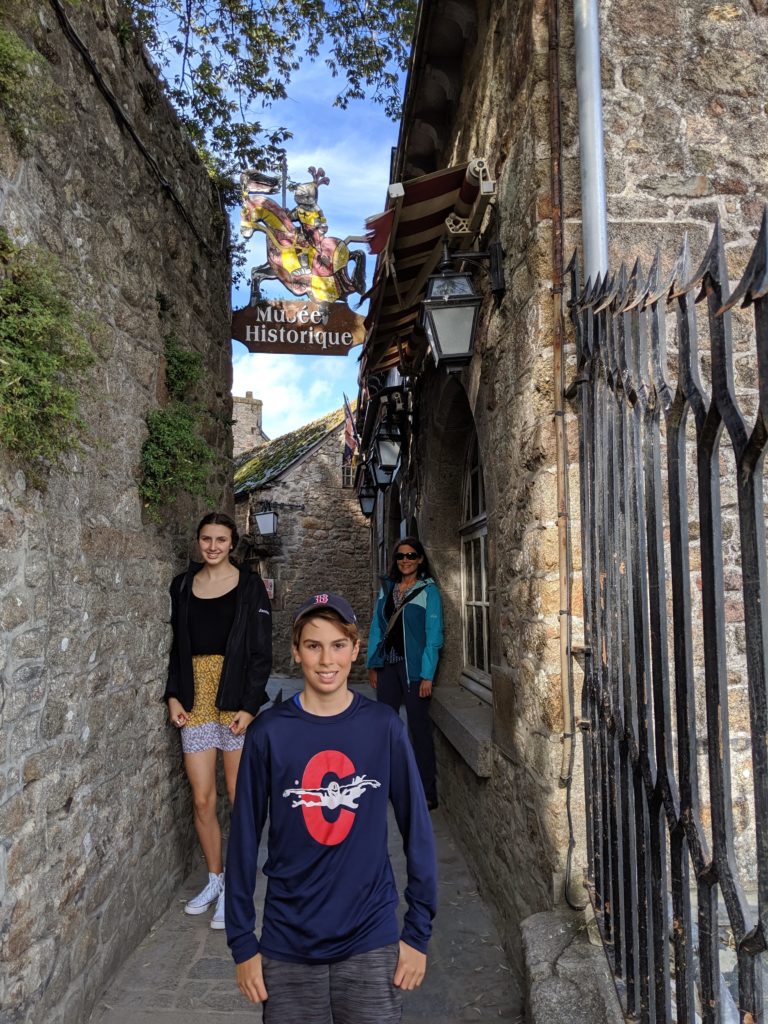
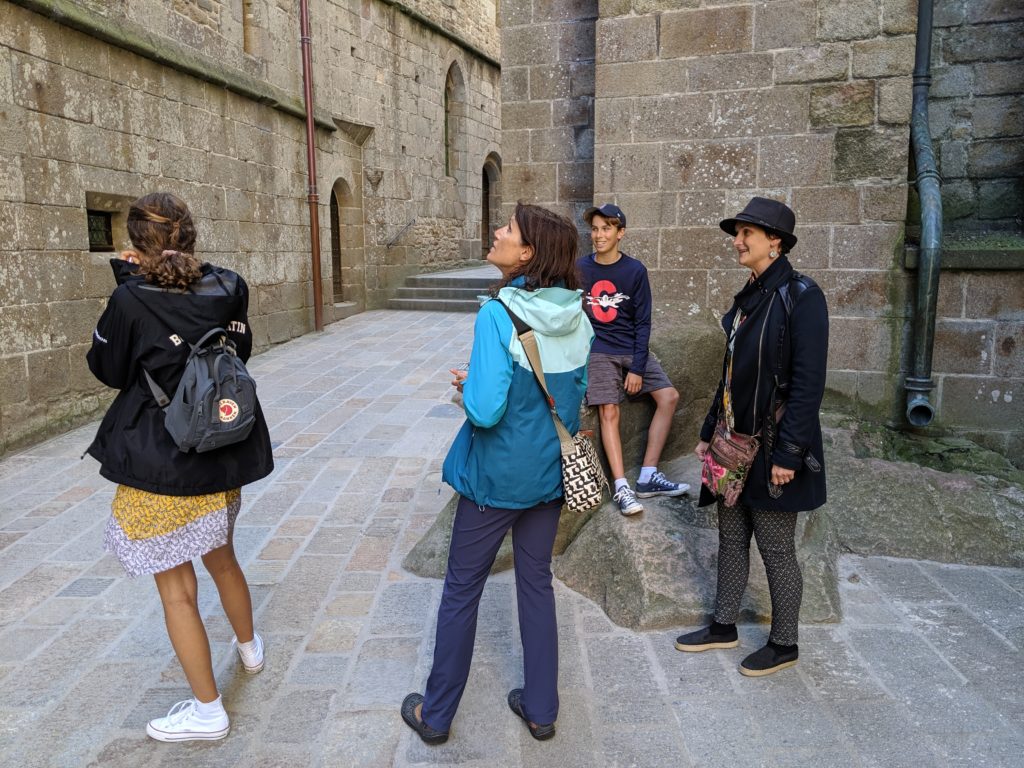
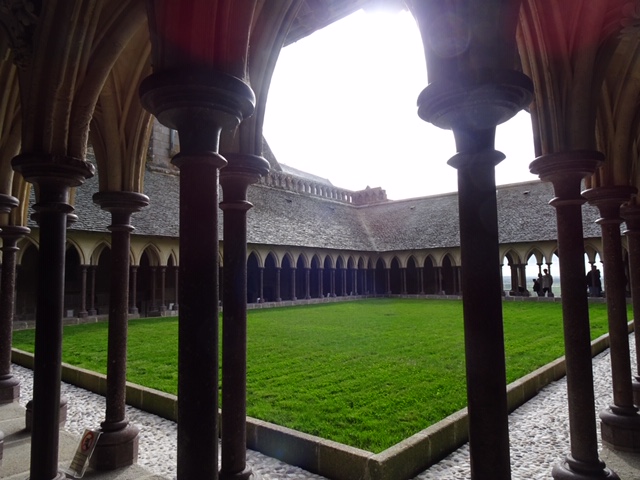
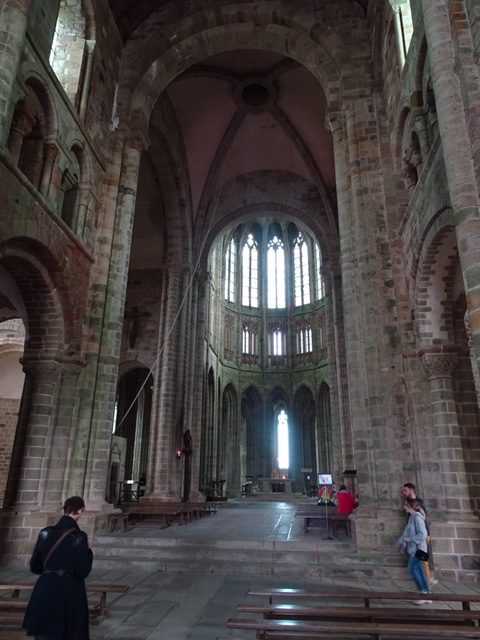
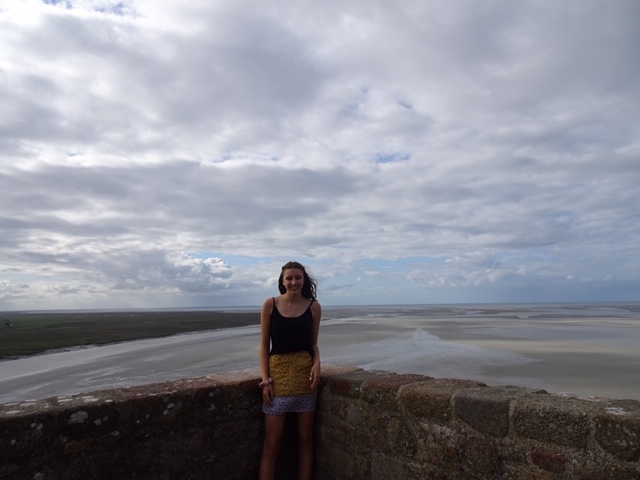
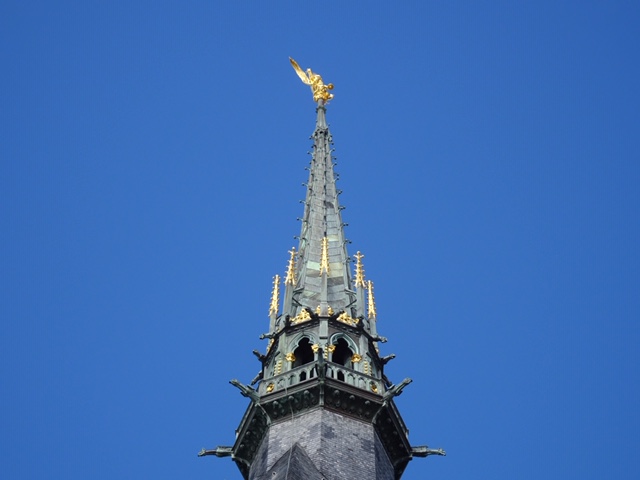
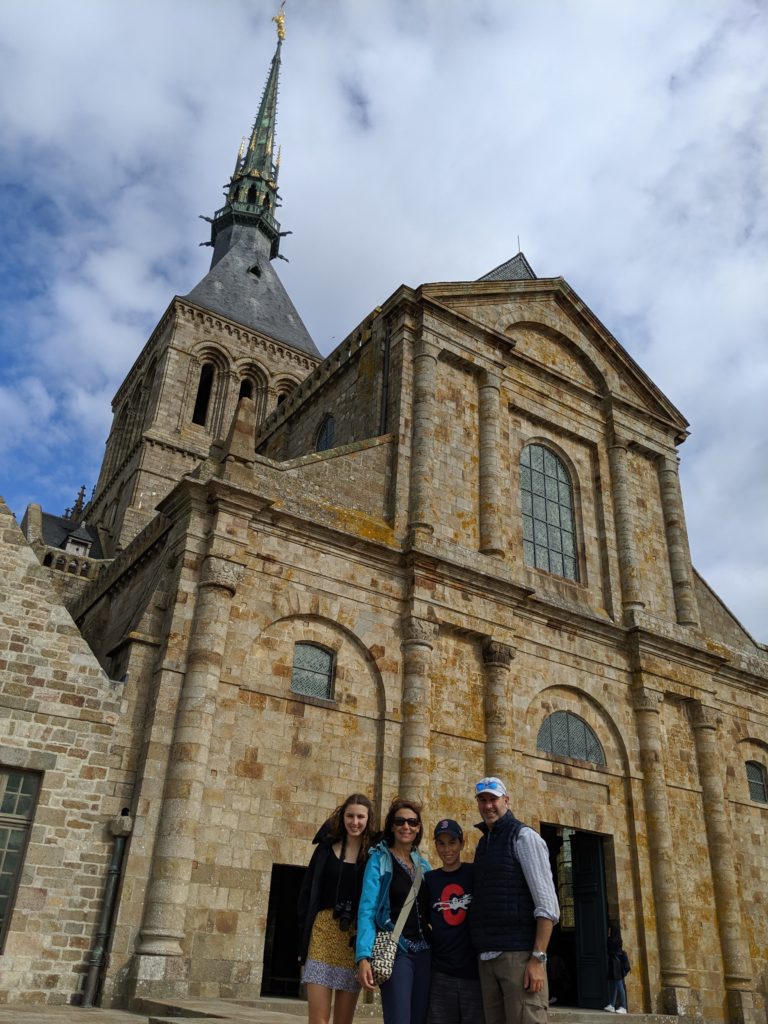
Our guide told us that one of the reasons that all the artwork and paintings were all so faded was that during the French Revolution the Abbey was actually a jail. They installed bars and stored criminals, and well as monks, there during a time when the people were against the church. They also destroyed sculptures by either breaking them or crushing all the faces.
From there we went down and continued around even lower on the spiral, there was a medical area, another dining room, a book coping room, and another small altar. All of these were a lot more primitive and older, with thick walls all made of stone and none of the beauty of the rooms above. There was also a very big hamster like well that would move a cart connected to it up and down and track. They had been using simple machines like this since the Romans, and they used it to carry the stone up and make the Abbey taller.
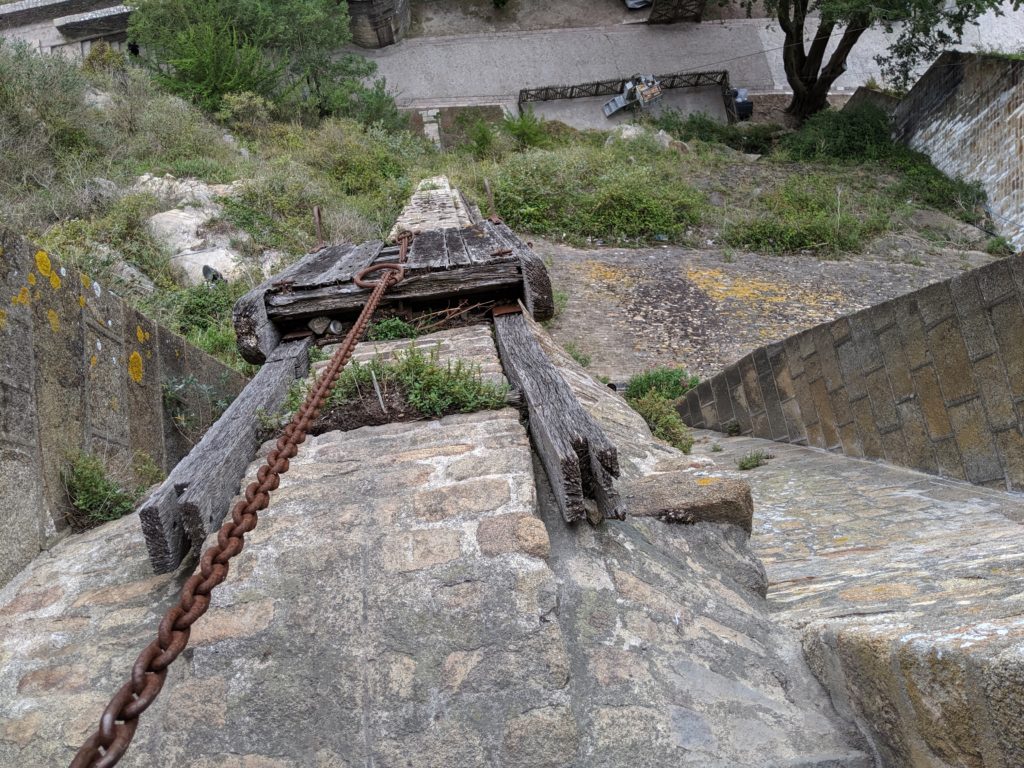
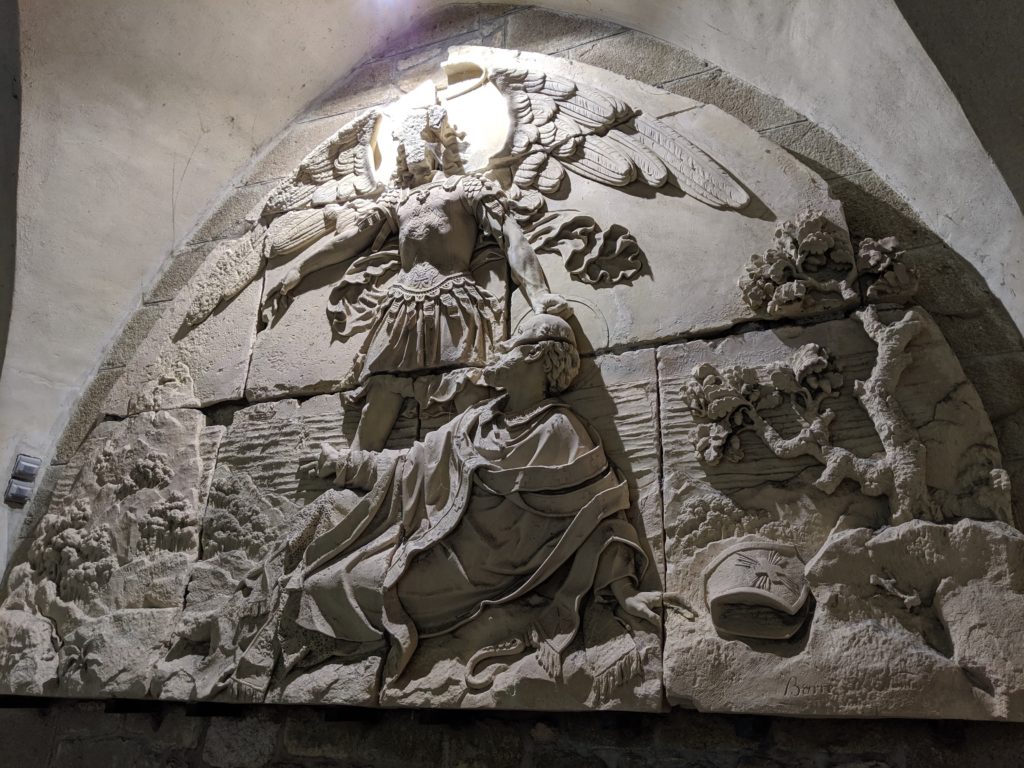
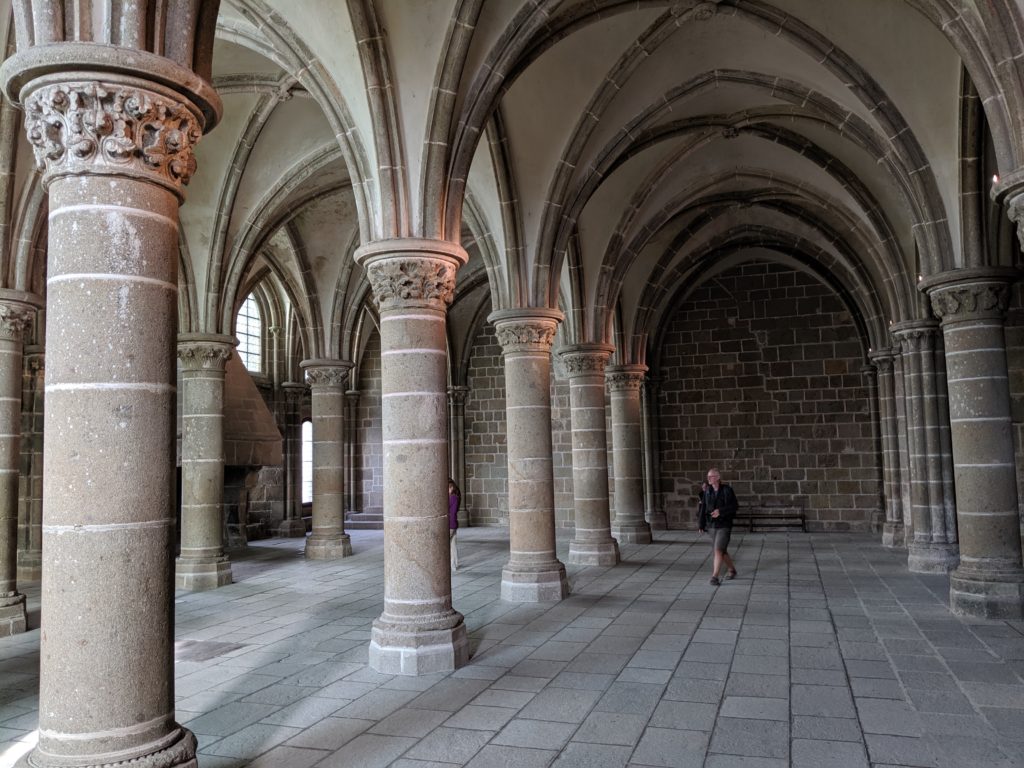
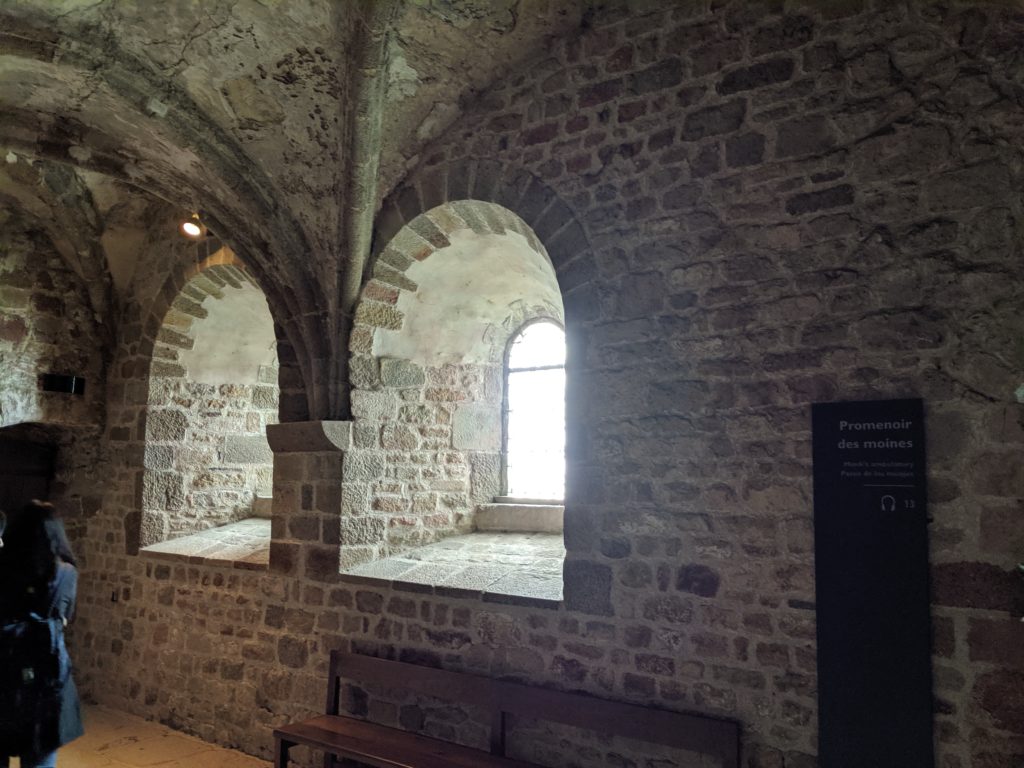
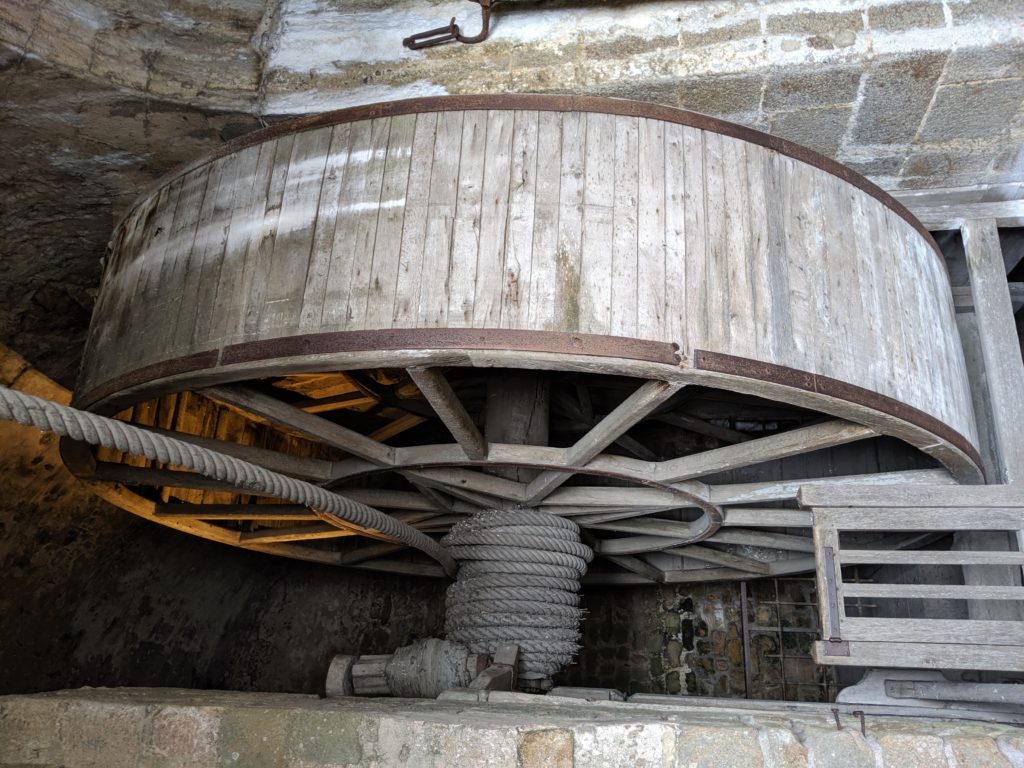
We were then able to exit the Abbey into a small gift shop where we thanked and said goodbye to our guide. As we were walking down from the Abbey and leaving Mont Saint Michel, we didn’t see it just as a mysterious castle but as a time capsule of culture.

